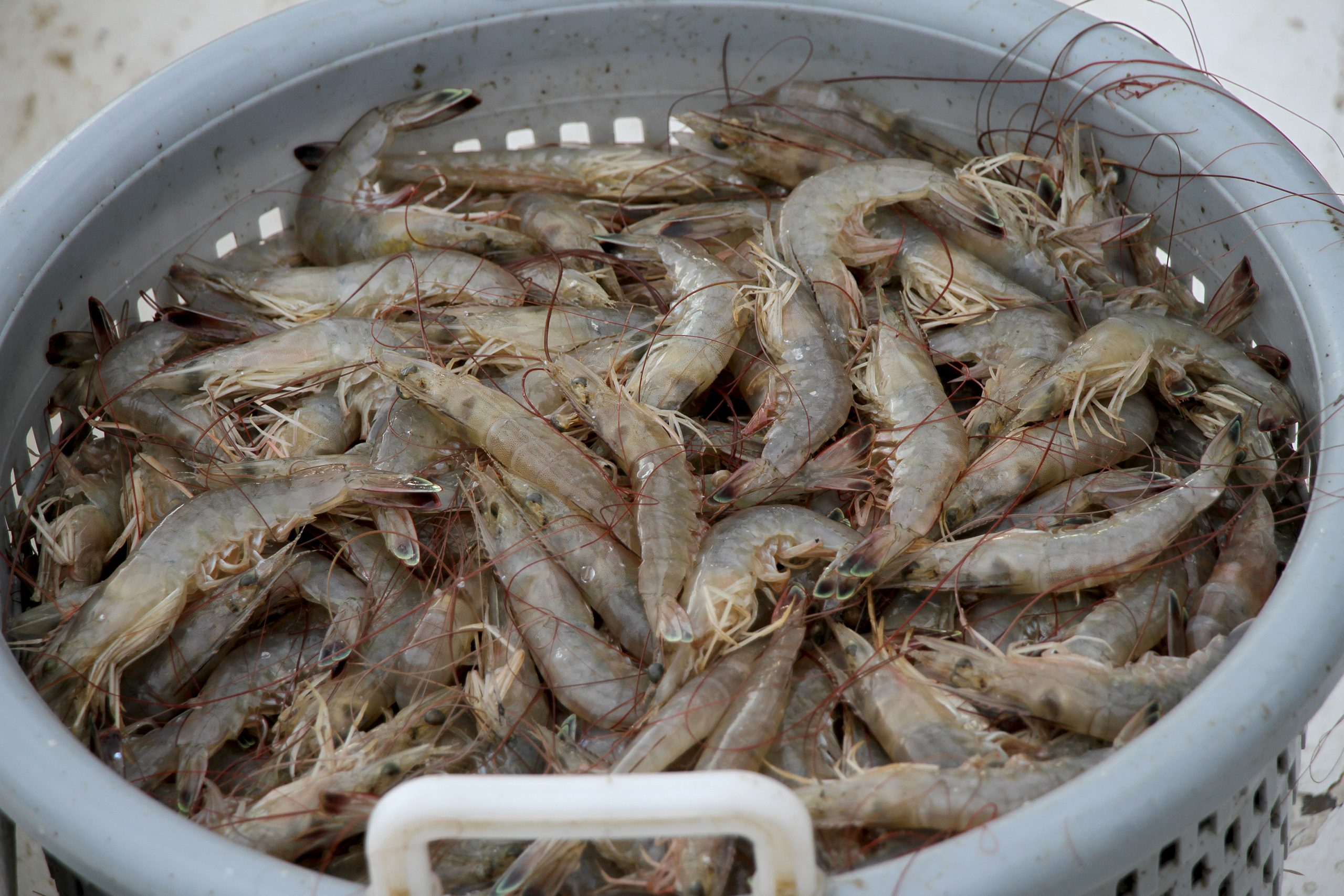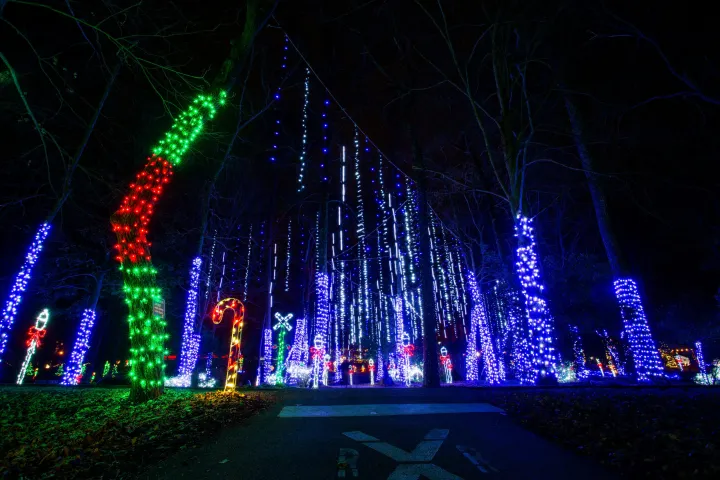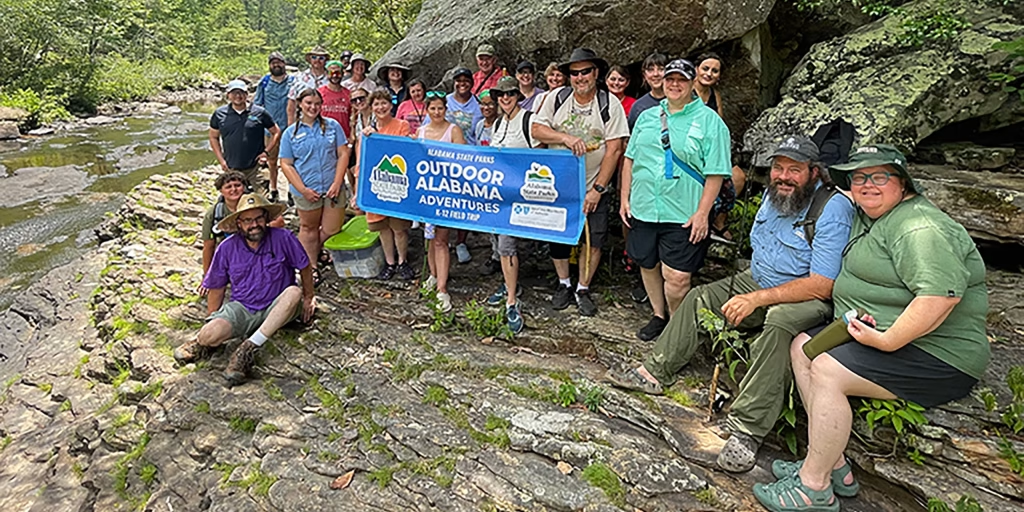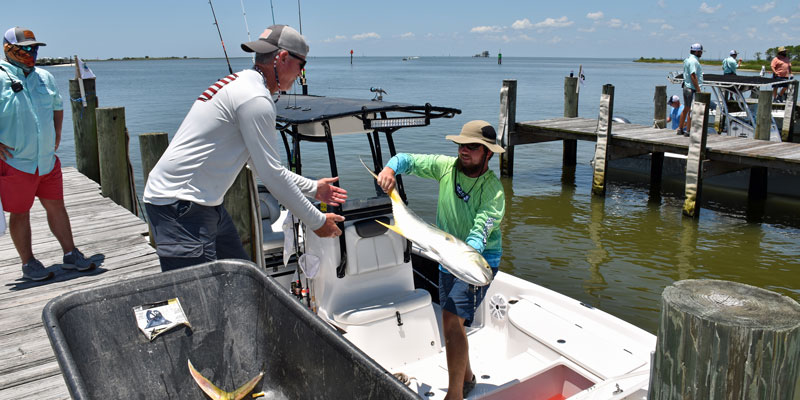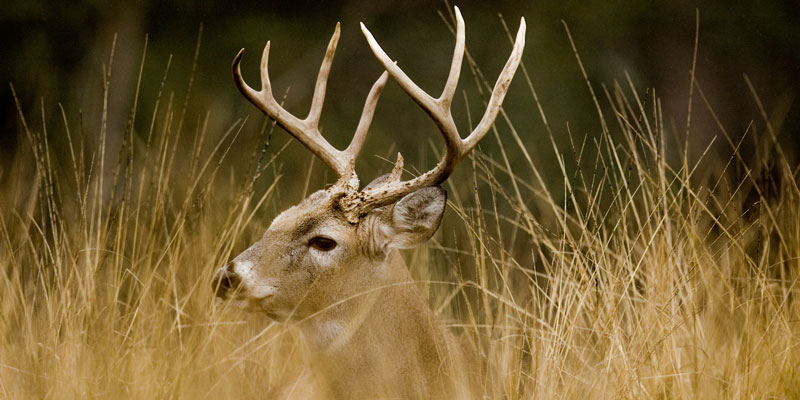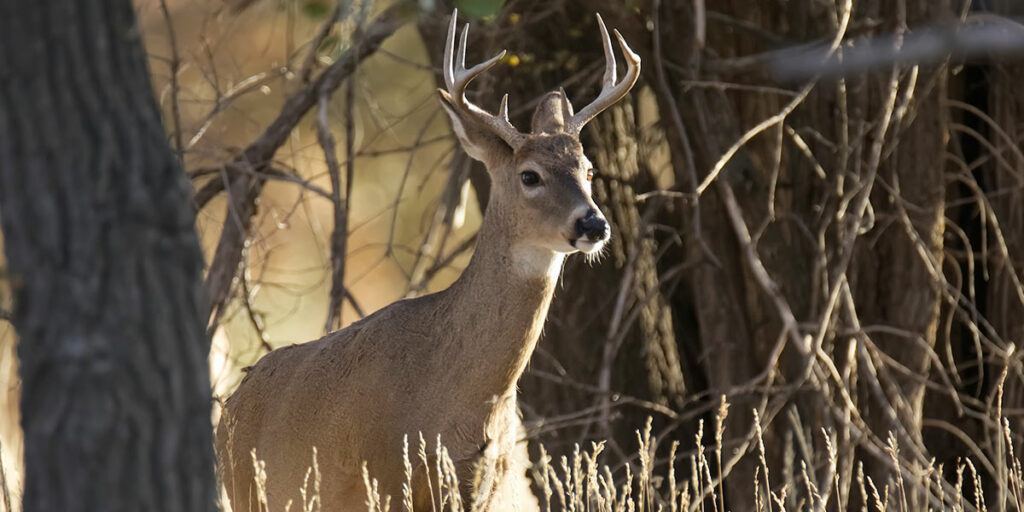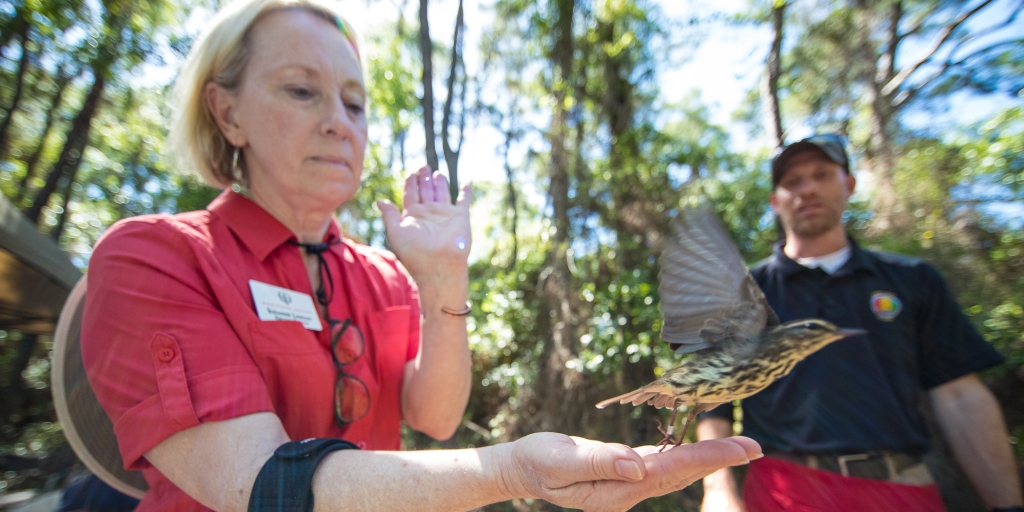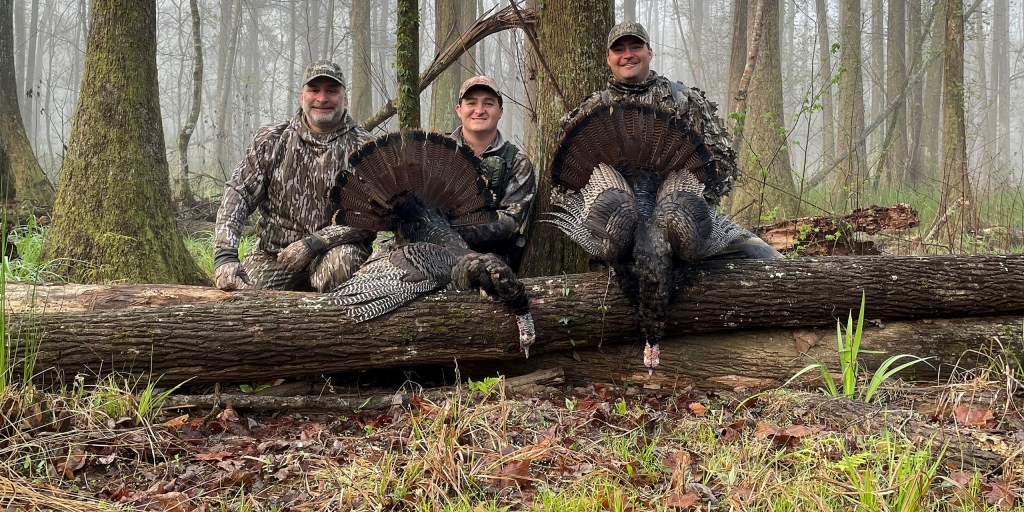Doug Plash really can’t help himself, but you can blame it all on his roots.
When he’s sitting at home on Plash Island on the banks of the Bon Secour River, the urge to head out in his boat and harvest the tasty crustaceans that are plentiful along Alabama’s Gulf Coast is overwhelming.
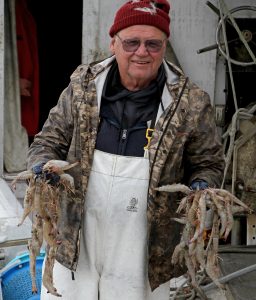
“There’s a boat across the river named ‘I Gotta Go,’” Plash said in the wheelhouse of his shrimp boat named after his daughters, Melissa, Jennifer and Kristi. “I probably should have named my boat that.”
Plash Island came into existence when the Intracoastal Canal was dug in the 1940s, separating the land that is surrounded by the Bon Secour River on the other sides. He is the fifth generation of Plashes to live on the island with his grandfathers buried on the island. One grandfather owned a freight company that used five schooners to haul beer from the Jax Brewery in New Orleans and hauled freight to Mobile. The semi-truck eventually left the schooners at the dock.
“The family started shrimping when the (commercial) ice machine was invented in the late 1930s,” Plash said. “No way to keep them cool before that. After they got back from World War II, they went into the shrimping business. They had an oyster business before that. A plane from Pensacola Navy Base used to come over and get oysters. They would land in the river. My grandfathers had good oysters.”
When the 69-year-old Plash was 13 years old, he was introduced to the rigors of hauling nets, followed by sorting and heading shrimp.
“That was my summer job,” Plash said. “My father (Floyd “Buck” Plash) double-rigged (one net on each side) a boat, and it seemed like we caught twice as many shrimp as everybody else. He had one net that wasn’t catching too good, but I still couldn’t keep up. I kept falling asleep in the pile of shrimp at night. We worked 48 hours straight, came home on Wednesday and went back out. I lost 30 pounds that summer. All I ate was potted meat and crackers. We didn’t have time to cook.”
Plash shrimped only during the summer. He graduated from high school and then got a bachelor’s degree in business at Troy (State) University. He interviewed for a job at a textile mill in LaGrange, Ga., but life intervened.
“My wife got pregnant, and I went to shrimping,” he said.
Plash got his first shrimp boat in 1977 and named it the Lady Kris after his first daughter. His current vessel was built in his backyard in 1999 and 2000.
“It took about a year to finish it,” he said. “I shrimped at night and worked on the boat in the daytime. In the winter, I worked on the boat steady. I cashed my first check off that boat on April 13, 2000. I was stressed out. I had two kids in college, and everything seemed to break. I had to do everything twice.
“I remember when we first started, we would get $8 a pound for big tails. They’re way below that now.”
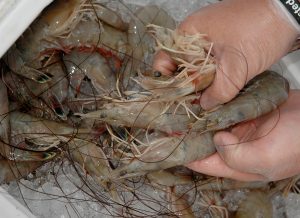
On a typical night, Plash deploys a 10-foot net (try net) to locate the shrimp before deploying the big nets, which are 25 feet each. He’s deployed his nets everywhere in Alabama from Perdido Bay to the Mississippi line and all the way to the head of Mobile Bay.
“What I do is pull that try net for 15-20 minutes and see how many I catch per minute,” he said. “If the catch is real good, you turn around real quick. Sometimes we have to hunt shrimp, but most times we just start dragging. I had enough cousins and uncles out shrimping that we figured out pretty quick where the shrimp were.”
During his early shrimping career, Plash made a living selling brown and white shrimp, but he thinks the completion of the Tennessee-Tombigbee Waterway in 1984 changed the shrimp ecosystem with additional flow through Mobile Bay.
“It changed the salinity,” he said. “Brown shrimp have to have salty water. We have brown shrimp in the spring, but they don’t get big enough to make any money. White shrimp prefer less salinity. They migrate in the fall, but it seems like we have two crops of them. We catch them in the spring and the fall.”
White shrimp head to the Gulf of Mexico when the water warms in the spring to spawn, which usually lasts from March through September. They migrate inshore in the fall. The white shrimp that survive the winter grow rapidly in late winter and early spring.
“A lot more white shrimp are caught in Mobile Bay than there ever has been,” Plash said. “It’s been a bumper year for white shrimp.”
That should be good news for shrimpers, but that doesn’t necessarily translate into a bumper bank account. The influx of imported shrimp that are raised in ponds overseas has flooded the market, and wild-caught shrimp prices have suffered. The seafood processors have also been affected.
“The peeler in our area went out of business two years ago because he couldn’t compete,” Plash said. “One of the peelers in Bayou La Batre went out of business last winter. That has hurt us because nobody wants head-on shrimp.”
Conservation Commissioner Chris Blankenship agreed it has been a tough year for shrimpers due to imports and market conditions and is hoping to deliver some relief soon.
“We coordinated with Governor (Kay) Ivey to ask NOAA for a declaration of a Fisheries Disaster for our shrimpers,” Commissioner Blankenship said. “We are still waiting on a decision on this request. The dockside price for shrimp is so low now and fuel so high, on some trips the shrimpers lose money. That’s not right! Congressman Jerry Carl has also been actively involved working to get tariffs or other adjustments on the foreign shrimp flooding our markets. I appreciate his support for Coastal Alabama and him working so hard to support the hardworking men and women in the seafood industry. We all will keep fighting to help the shrimp fishermen. Culturally and economically, they are vital to Coastal Alabama.”
Plash said when he’s on the water he has very little competition for the productive dragging spots. The commercial boats are not shrimping because of the market. The only boats Plash routinely sees are those who are doing what he does – selling to the public right off his boat when it’s docked behind his house. He has a network of individuals he keeps in touch with through social media to let them know when he has shrimp available. Anyone can call (251) 752-1379 to check on the availability of shrimp.
“Everybody is starting to sell off their boats,” he said. “If I go catch 1,000 pounds, I’ve got to sell those shrimp to individuals. If I don’t sell them fresh, I have to head them and put them in my freezers. Right now, my freezers are full. I went one night this past August and ended up heading shrimp for three days. I didn’t burn much fuel this year, but I worked twice as hard.”
Although Plash said he has caught a few shrimp during daylight hours in his long career, the overwhelming majority are caught at night.
“Shrimp don’t like the daytime,” he said. “Everything is trying to eat them. They bury up in the sand. They come out at night to feed. Back in my daddy’s day, my Uncle Bud worked on one of the Gulf boats, and they came up with the tickler chain. Uncle Bud put one on daddy’s boat and one of my other uncles was getting beat so bad, he had to figure out what Uncle Bud did. If you lose your chain, you can tell the difference right away. You’ve got to get them off the bottom and make them jump. White shrimp jump really good. Sometimes they even jump on the boat. When you get in them good, you can see them jumping.”
Plash said there’s nothing glamorous about dragging a shrimp trawl all night, but he still goes every time the weather allows.
“It’s a long, boring night,” he said with a laugh. “I thought about doing shrimp charters. I took my preacher and another man. They were dying to go. I told them I wanted to know what they thought about shrimping after we got home. After we got back, my preacher said, ‘You got me the first time, but you’ll never get me again.’ They were having fun until 3 (a.m.) but then they said it was time to go to bed.”
Plash said he has no idea where shrimping in Alabama will be in 10 years with the influx of imported shrimp and low prices.
“I have a picture from the 80s of Bon Secour Fisheries with 68 boats tied up outside,” he said. “You ride by there now and you may see one or two or there may not be any.
“But I enjoy shrimping, so I’m going to do it as long as I can. If I haven’t been in a while, when I’m on the boat, it’s most peaceful place I can be. I may not be making a dime, but I’m out there where I want to be.”




